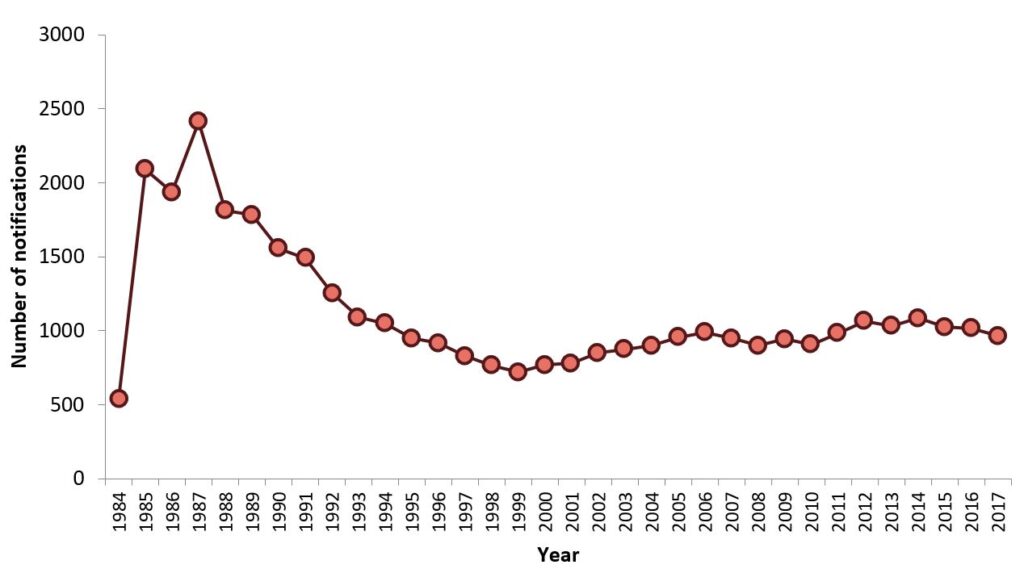The first AIDS diagnosis in Australia was in 1982,[13] and following the introduction of HIV testing in 1985, cases of newly diagnosed HIV infection peaked at 2,773 in 1987 declining to their lowest level in 1999 (Figure 1).[14] Studies using the back-projection method have estimated that HIV incidence was highest in 1984 (2,890 cases) with a rapid decline in the latter part of the decade.[15] The decline in incidence has been largely attributed to the rapid adoption of HIV prevention practices, including safe sex, and world leading needle and syringe programs.[16];[17]
Early diagnoses in Australia were characterised by low levels of heterosexual transmission and transmission among people who inject drugs, with most cases diagnosed among men with a history of male-to-male sex (86%).[18][19] Of the 16,765 newly diagnosed cases of HIV infection between 1984 and 1992, the majority were reported in New South Wales (67%). The contribution of diagnoses due to receipt of blood, blood products, tissue or treatment of haemophilia declined rapidly from 14% in 1985-1986 to 1% in 1991-1992.[20] There has been an average of one mother-child HIV transmission per year over the last 10 years.[21]Reflecting the approximately 10-year period from HIV infection to development of AIDS, AIDS diagnoses peaked in Australia at 909 in 1994.[22] The first antiretroviral drugs for HIV inf
ection became available in Australia in 1987 and were initially used as monotherapy then as dual therapy from 1992,[23] leading to a continuing decline in AIDS and AIDS-related deaths. By the end of 2009 there had been 10,446 diagnoses of AIDS and 6,776 deaths following AIDS.[24]
Between 1999 and 2012 HIV diagnoses in Australia increased by 48%, likely attributed to increases in risk behaviour and confidence in HIV therapies.[25][26] However, in the 5 years from 2013 to 2017, HIV diagnoses in Australia have decreased by 7%.1 This decrease has been alongside increases in testing, high treatment coverage, and an increased use of pre-exposure prophylaxis (PrEP).1
Figure 1. Newly diagnosed HIV infection in Australia by year

